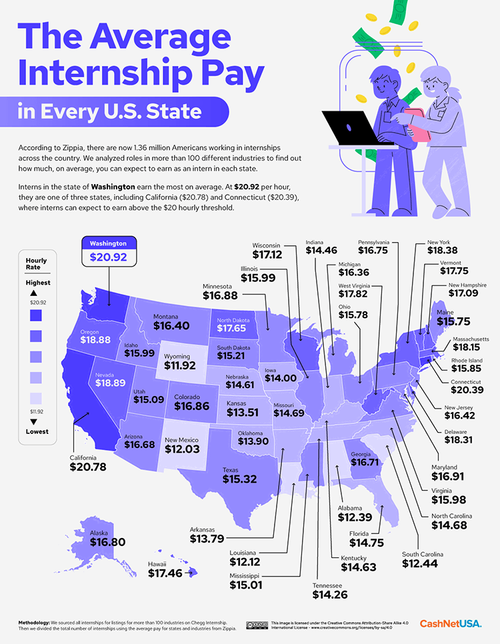The Four Worst Ways To Attack Bitcoin
Authored by Joakim Book via BitcoinMagazine.com,
In his latest book, Nouriel Roubini demonstrates the worst ways to try and attack Bitcoin…
Finding fault with Bitcoin and Bitcoiners is easy. Every schmuck, stick, know-it-all pundit, wise-ass and establishment elite has a handful of complaints readily available.
Bitcoin uses too much electricity; its fixed money supply schedule makes interventions from a benevolent central bank impossible; it doesn’t have enough inflation for a growing economy; it is used by pesky criminals; and its mean, technobabbling users hurt my brittle feelings.
The objections get tiresome about as quickly as they get recycled.
One fantastic example is the doomspeaker economist Nouriel Roubini, known for his bombastic and bearish declarations — frequently nicknamed “Dr. Doom” by the financial press. In his own mind, he is merely “realistic,” which every madman would say about himself when queried. In his latest book, “Megathreats: The Ten Trends That Imperil Our Future, And How To Survive Them,” he insists that most people overlook something about this infamous nickname:
“Those who label me Dr. Doom fail to see that I examine the upside with as much rigor as the downside. Optimists and pessimists both call me contrarian. If I could choose my nickname, Dr. Realist sounds right.”
The Bitcoin obituaries site 99bitcoins.com lists our beloved economist hater 12 times, but Googling finds plenty more Bitcoin denouncements from this outspoken character — in every outlet that’ll have him, it seems, from Twitter to the Financial Times.
To Roubini, bitcoin was a bubble in 2013, a “Ponzi game” and “not a currency” in 2014, a “gigantic speculative bubble” in 2017, almost all transactions were fake in 2019 and, most tastefully, in 2020 a little bit of everything:
Bitcoin is NOT a currency: it is not a unit of account, it is not a single numeraire, it is not a scalable means of payments, it is not backed by any asset, it is not legal tender, its price is highly manipulated & thus its partial store of value function is based on nothing.
— Nouriel Roubini (@Nouriel) November 9, 2020
What his new book does so well is outline the world’s many macroeconomic troubles. For five mesmerizing chapters, he describes the debt problems, the demographic impossibility that is the bankrupt Ponzi (sorry, “pension”) schemes of Western nations, the easy money disaster and the boom-bust cycle that it gives rise to. Stagflation in the 2020s did not come as a surprise to him, and he locates the blame precisely where it should be: “We poured massive amounts of money and fiscal stimulus into a financial and economic system already awash in cash and credit.” With a short-term view and politically-captured central banks, we get disastrously easy money because “that is what voters want and leveraged markets need to avoid crashing.”
He even comes down on the correct side of the 2022 blunder to use the dollar payment rails to sanction a G8 economy: “This sort of weaponizing of currency for the pursuit of national security goals is the latest frontier of the mission creep of central banks, starting with the Fed” (ignoring that the Federal Reserve doesn’t make sanction decisions).
As a rule, whatever Bitcoin’s flaws are — as a money, as a protocol, as a usable tool, as a community — it gets better, relatively speaking, when the incumbent monetary system gets worse. Whatever your position on Bitcoin was three, five or 10 years ago, you must look at it more favorably today: the monetary system in place has gotten so much worse, with inflation, anti-money-laundering bureaucracy, clown-world behavior and frozen accounts being just the worst offenders. All is not well in the world of money; that makes Bitcoin a more tempting prospect, all things equal.
So, is Roubini a Bitcoiner now? Has the ultimate Bitcoin bear, diligently at it for a decade, finally come around? Seeing clearly the monetary madness of the world, it wouldn’t be the strangest thing for Dr. Doom to at last tone down his criticism of Bitcoin.
Instead, we got Groundhog Day.
The single chapter dedicated to financial instability spends a dozen or so pages on Bitcoin, unbelievably dedicating most of them to “crypto,” “DeFi,” “stablecoins” and central bank digital currencies. Sigh.
Still, even here we had potential: The rise of crypto, explains Roubini, “exposes our collective wilting faith in the ability of governments to back the money they issue.” Hear, hear.
QUEEN TAYLOR CALLED
“Ugh, so he calls me up and he’s like ‘I still love youuu’, and I’m like ‘I just… I mean, this is exhausting, you know? Like, we are never getting back together. Like, ever.’”
–Bitcoin philosopher Taylor Swift
If you are to critique Bitcoin — something you certainly, certainly can do — here are some things you should do:
First, get your monetary attributes in order.
There are three — store of value, unit of account, medium of exchange — not five. You can’t invent new ones and duplicating previous ones isn’t useful. Roubini introduces “single numeraire,” which is exactly the same thing as a unit of account, and splits store of value into stable value against “market value” and against “an index of the price of goods and services.” Try carving out a difference. This is silly word play.
Second, make sure your criticism is levied against Bitcoin, not “crypto.”
Most people think of bitcoin as merely the first “cryptocurrency,” the most famous among tens of thousands of scammy shitcoins. It’s not. What holds and happens in the la-la land of vaporware tokens rarely has anything to do with Bitcoin: Sam Bankman-Fried’s shenanigans, Terra’s implosion or the Cryptoqueen scam do in no way detract from Bitcoin’s core, its principles or operations. When Roubini cites “BaconCoin,” quotes LoanSnap’s founder or reports negative comments by DogeCoin’s creator, he does not undermine Bitcoin’s promise.
Bitcoin is a one-off monetary invention, separated from every other money or “crypto” by a Great Wall of categories and concepts: it doesn’t have a company or founder running it, like every other shitcoin does; it doesn’t have counterparty risk nor is it subject to censorship like every other fiat currency. Bitcoin has no CEO and no marketing department; it has the strongest Lindy and the highest hash rate.
Third — and this is a hard one — make sure your points haven’t already been debunked, answered and relegated to the dustbin of unimpressive, erroneous jabs at Bitcoin.
Repeating an outdated accusation makes you look stupid, not Bitcoin. Roubini goes for the vast wealth inequality in Bitcoinland, believing it to be “worse than that of North Korea.” It’s not, and as flawed as these investigations are, UTXO ownership seems to become less and less unequal over time — as you’d expect for an emerging money that gets distributed in use.
Unsurprisingly, it uses too much energy, as much as a small country and therefore “will blunt urgent climate initiatives to slow down global warming.” It doesn’t and it won’t: if anything, Bitcoin unlocks stranded energy, contributes to balancing the grid and miners are more renewable than most major economies.
Fourth, make sure that the property of Bitcoin that you’re attacking isn’t worse in the legacy system.
Warren Buffet often makes this error, thinking that hacks, fees or the fact that bitcoin doesn’t generate “yield” dooms it to failure. Nevermind that paper money doesn’t either (unless you count seigniorage to the central bank); nevermind that his ridiculing of bitcoin as a Ponzi applies equally well to apartments or Uncle Sam’s pension schemes.
The most absurd accusation arrives with Roubini’s silly soda shitcoins: If you need Coke coins to buy Coke and Pepsi coins to buy Pepsi, how could you ever establish (relative) value?! How could you ever know what either of them are worth?
Makes you wonder how Americans could ever buy things when they’re abroad, how pound-based customers (i.e., British residents) can ever acquire anything sold in euros or spend their melting currency on Fifth Avenue. There’s a publicly-displayed market price for you to “convert” value into the monetary system that you’re familiar with; and there’s a publicly-traded market that the banks on either side of your and your vendor’s transaction can trade and settle such that international trade works.
Fascinating.
His currency risk examples are illustrative — and disingenuous. Apparently vendors can’t “price” goods in bitcoin since “an overnight fall in value might wipe out the [seller’s] profit margins.” That’s true as far as it goes, but holds equally so for any cross-currency transaction in the legacy world: imports or export or any supply chain more complicated than your local currency area. Besides, if you worry about the currency exposure in your sales, there is a liquid market that provides hedges for you. Many stores that accept bitcoin through various third-party solutions instantly exchange them for dollars, thus mitigating the risk.
In the very next sentence, Roubini considers the downside of the opposite risk:
“Were someone to write a mortgage with principal and interest in bitcoin, a spike in the value of bitcoin would cause the real value of the mortgage to skyrocket. If default then likely occurs, the lender loses money, and the borrower loses her house.”
I suppose no American therefore owns property in New Zealand or Mexico, no European has debt contracts in USD-dollars. These are not novel risks, but ordinary financial risks that firms and households deal with already.
What’s so fascinating is Roubini’s lack of symmetry: If margins can get obliterated by an overnight drop, then margins can also be doubled by an equal overnight rise. Symmetric risk. If bitcoin’s exchange rate for dollars falls — which Roubini is so certain it will — a bitcoin-denominated mortgage will wipe out itself by becoming easily repayable with appreciating dollars. This isn’t to say that he’s wrong to point out these risks, but that they’re reduced to what economists call “risk aversion.” Unhedged bitcoin transactions or debt contracts are bad if households worry about the downside more than the upside — which, in the real world, seems to be true only to some extent.
The honest conclusion isn’t Roubini’s “bitcoin is incapable of being money,” since many established currencies with volatile values between one another can serve that function, but that an emerging bitcoin economy would have this added, minor layer of business risk.
It’s like Roubini went out of his way to be up to date on all his other macro worries, only to lay forth criticism of Bitcoin that was outdated by the time he first voiced it in the mid-2010s.
Most devastatingly of all: Can anyone really be taken seriously when they slap a plural “s” on the uncountable noun “bitcoin”?
The better you understand the faults of the current way of doing monetary things, the better Bitcoin looks.
When you look at the many macro ills that Bitcoiners are so well attuned to, the pit of your stomach should churn in anxiety. When you look at the debts (public and private) that rampage the system, you should be feeling nauseous. All of this Roubini captures expertly, and much of his writing could even have been featured on these pages. Our beloved economist hater gets the problem, better and more vocally than most. Still, no dice.
It’s unfathomable that someone so attuned to the world’s catastrophic macro problems as Roubini cannot see the master-key solution that is Bitcoin.
Tyler Durden
Wed, 02/01/2023 – 20:45
via ZeroHedge News https://ift.tt/qedAJIk Tyler Durden
















